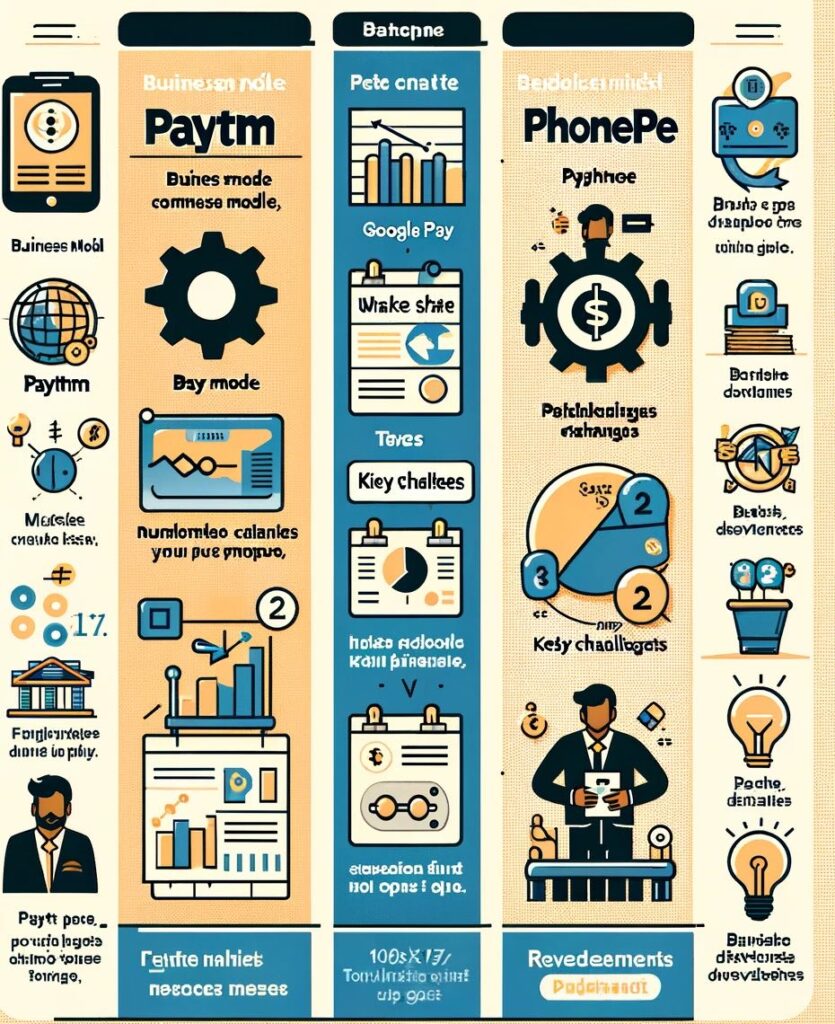The UPI Macro Tailwind
UPI has become India’s default money movement layer—instant, free for consumers, and now embedded in everything from bill payments and transit to e-commerce and offline retail. Monthly transactions and total value processed set new highs through 2025, powered by deeper merchant penetration, UPI Lite for small-ticket flows, tap-to-pay, and the rollout of Credit Line on UPI (CLUPI). Cross-border acceptance accelerated with new corridors for Indian travellers, while domestic rails benefited from continued policy support and ecosystem guardrails to curb fraud and operational risk. With the market-share cap for third-party UPI apps deferred, leaders are scaling without artificial throttles, keeping the competitive game focused on product differentiation and monetisation rather than raw volume constraints.
Market Share 2025: Consolidation at the Top
The leaderboard is stable and concentrated. PhonePe commands roughly the mid-to-high-40s percent share of UPI volumes, Google Pay holds the mid-30s, and Paytm sits in the mid-single digits after the payment-bank episode but remains No. 3 by volumes. Together, PhonePe and Google Pay process more than four-fifths of UPI transactions, underscoring a two-horse race on consumer P2P and high-frequency merchant flows. The deferral of the 30% cap through 2026 removed a near-term overhang and rewarded execution at scale.
Why it matters: With the pie still expanding, share stability gives the leaders operating leverage on hardware subscriptions, settlement economics, and future credit monetisation, while challengers must win on niche segments, B2B rails, or differentiated credit.
Company-by-Company Deep Dive
PhonePe: Scale Engine, IPO Runway, Product Sprawl
Positioning: PhonePe is the default habit for millions, with network effects across P2P, P2M, and a dense merchant device footprint. The company has built adjacencies—broking (Share.Market), insurance and wealth offerings, and an ONDC-native shopping layer (Pincode)—creating optionality beyond payments.
Monetisation levers:
-
Credit Line on UPI integration, opening issuer-funded interchange and data-driven underwriting.
-
Merchant hardware subscriptions (soundboxes and POS) that reduce checkout friction and disputes.
-
Cross-sell into investing and insurance where margins are structurally higher than payments.
Outlook: IPO chatter has intensified around a large domestic listing. The narrative is simple: defend share, grow merchant hardware ARPU, and show operating leverage outside pure payments.
Google Pay (GPay): Feature Velocity + SoundPod Offensive
Positioning: GPay sustains high share on the back of clean UX, reliability, and deep bank partnerships. The app remains a favourite for P2P while expanding in P2M through aggressive merchant acquisition.
Monetisation levers:
-
SoundPod hardware at the point of sale, bringing real-time audio confirmations to long-tail merchants and introducing a recurring fee pool.
-
CLUPI rails for low-friction credit inside the existing UPI habit loop.
-
International acceptance partnerships that keep GPay relevant for travellers and cross-border use cases.
Outlook: Expect continued hardware rollout, tighter bank integrations, and incremental merchant-side features that chip away at churn and boost ARPU.
Paytm: From Payments-Bank Shock to TPAP Stabilisation
What changed: After stringent restrictions on its payments bank in early 2024, Paytm migrated its UPI stack and merchant acquiring to partner banks and now operates as a third-party app provider (TPAP). The move compressed share but preserved the user franchise and merchant footprint.
Monetisation levers:
-
Leaner cost base with sharper focus on devices, merchant services, and subscription economics.
-
Re-energised bank partnerships to stabilise reliability and grow P2M volumes.
-
Potential upside from CLUPI adoption once partner rails and risk frameworks settle.
Outlook: Near-term is about execution discipline, rebuilding trust, and compliance hygiene. If Paytm can defend the No. 3 slot while re-accelerating growth on partner rails, sentiment could inflect.
BharatPe: Merchant-First—and Finally Profitable
Positioning: BharatPe doubled down on its core—merchant QR, BharatSwipe POS, and embedded credit via its lending affiliate. In FY25 it swung to adjusted profitability and secured final authorisation as a Payment Aggregator, clearing the way for a scaled acquiring business under a new brand architecture.
Monetisation levers:
-
Payment Aggregator revenue from online acceptance plus offline POS subscription streams.
-
Embedded credit at the point of acceptance, with distribution advantages through existing merchant flows.
-
Value-added services across reconciliation, payouts, and working-capital tools.
Outlook: With governance noise largely behind it and profitability optics in place, BharatPe looks like a credible dark horse on the merchant side, especially if it can compound credit prudently and deepen POS penetration.
Product & Monetisation Angles to Watch
-
Credit Line on UPI (CLUPI): Pre-sanctioned bank credit usable directly via UPI changes the unit economics for apps and issuers. Expect tight underwriting, merchant discounts tied to CLUPI, and incentives that drive adoption without blowing out loss rates.
-
Soundboxes and POS Subscriptions: Audio confirmation devices are now table stakes for SMBs; the long-tail rental model compounds nicely and reduces disputes, improving merchant NPS and settlement confidence.
-
International UPI: Acceptance in popular travel corridors is maturing. As corridors deepen and pricing stabilises, cross-border UPI will become a small but strategic monetisation wedge for leading apps.
-
UPI Lite & Tap-to-Pay: Micro-payments at lower cost and faster checkout keep frequency high and provide a sandbox for loyalty mechanics.
-
Data & Cross-sell: Verified payments data unlocks targeted cross-sell into investing, insurance, and credit—each with fundamentally better contribution margins than payments.
Risks & Regulatory Watchlist
-
Supervisory Scrutiny: The payments-bank episode underscored zero tolerance for control lapses. Payment aggregators face tighter audits, KYC standards, and escrow discipline. Compliance will remain a board-level sport.
-
Concentration Risk: The market-share cap deferral lasts through 2026, but a policy reversal is possible if systemic risk rises. Contingency planning is essential for the top two apps.
-
Credit Quality: CLUPI growth that outpaces risk controls could spike loss rates. Early cohort performance will determine how quickly issuers scale limits and how rich interchange can be.
-
Hardware Economics: Soundbox and POS subsidies can drag near-term margins if churn is high. Sustainable ARPU requires robust collections and device retention.
Visual Snapshot (2025)
| Player |
2025 UPI Share* |
Core Strengths |
2024–25 Highlights |
Key Risks |
| PhonePe |
~46–48% |
Scale, merchant network, product breadth |
IPO preparation; CLUPI; ONDC & wealth expansion |
Profitability path post-IPO; policy shifts |
| Google Pay |
~35–37% |
UX, reliability, bank partnerships |
SoundPod rollout; CLUPI; international corridors |
PA oversight; hardware unit economics |
| Paytm |
~6–8% |
Brand recall; devices; merchant tools |
PPBL exit → TPAP on partner rails; cost reset |
Regulatory overhang; share recovery |
| BharatPe |
n/a (consumer UPI small) |
Merchant QR, POS, credit |
Adjusted profitability; PA licence |
Credit risk; execution; fundraising timing |
*Indicative volume shares; the market is still expanding rapidly.
Who’s Best Positioned for the Next Leg?
-
PhonePe remains the default leader with the broadest set of monetisation options and a likely IPO providing currency for M&A and talent.
-
Google Pay will keep trading blows on P2P/P2M with feature velocity and nationwide hardware deployment, staying neck-and-neck on engagement.
-
Paytm is in rebuild mode; if partner-bank rails and governance remain steady, a measured comeback is plausible.
-
BharatPe is set up for a merchant-side surge—profitability optics plus a PA licence is a cleaner story heading into any future raise.
FAQs
Which app is best for UPI in 2025?
For reliability and acceptance, PhonePe and Google Pay dominate. Paytm is third and focused on stabilising growth; BharatPe targets merchants more than consumer P2P.
Is Paytm safe to use after the RBI action?
Paytm now operates over partner-bank rails as a TPAP. Users transact via those banks while Paytm focuses on devices and merchant services.
What is Credit Line on UPI?
CLUPI is a pre-approved bank credit line that works directly inside UPI apps, offering card-like flexibility with lower friction.
Will PhonePe go public?
Yes, a large domestic IPO is widely expected. The investment case hinges on sustaining share, growing hardware ARPU, and monetising adjacencies.
Do soundboxes really matter?
Yes. Real-time audio confirmations reduce disputes and build trust for SMBs, supporting sticky subscription revenue at scale.







